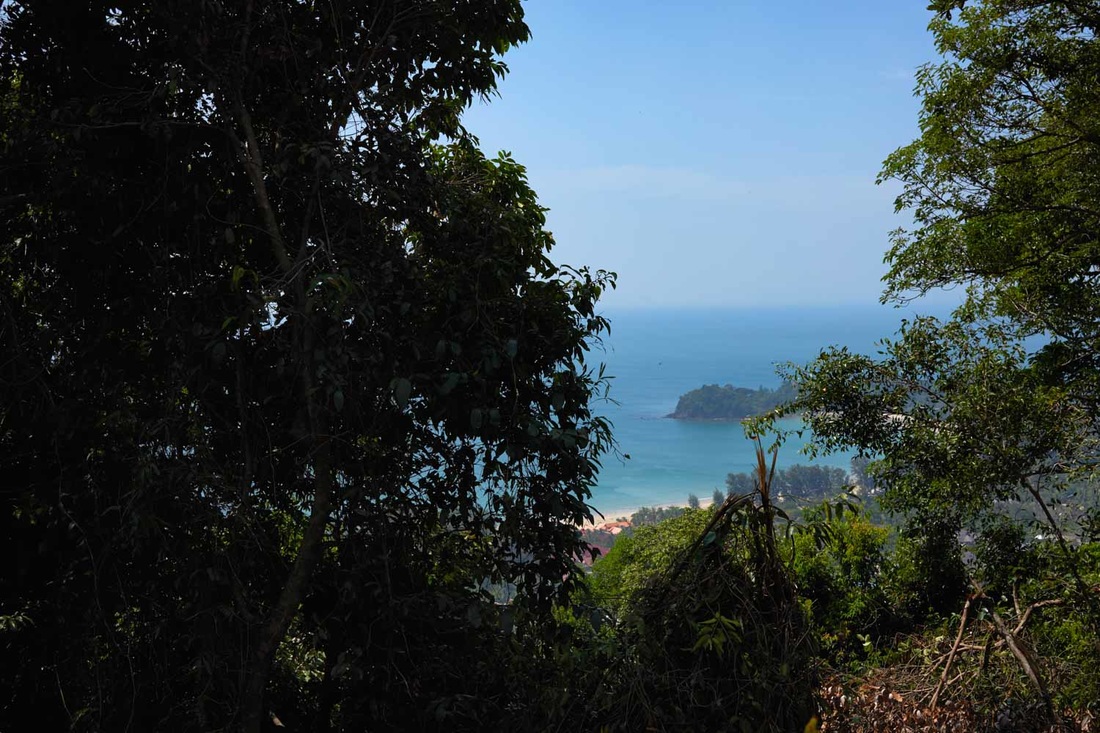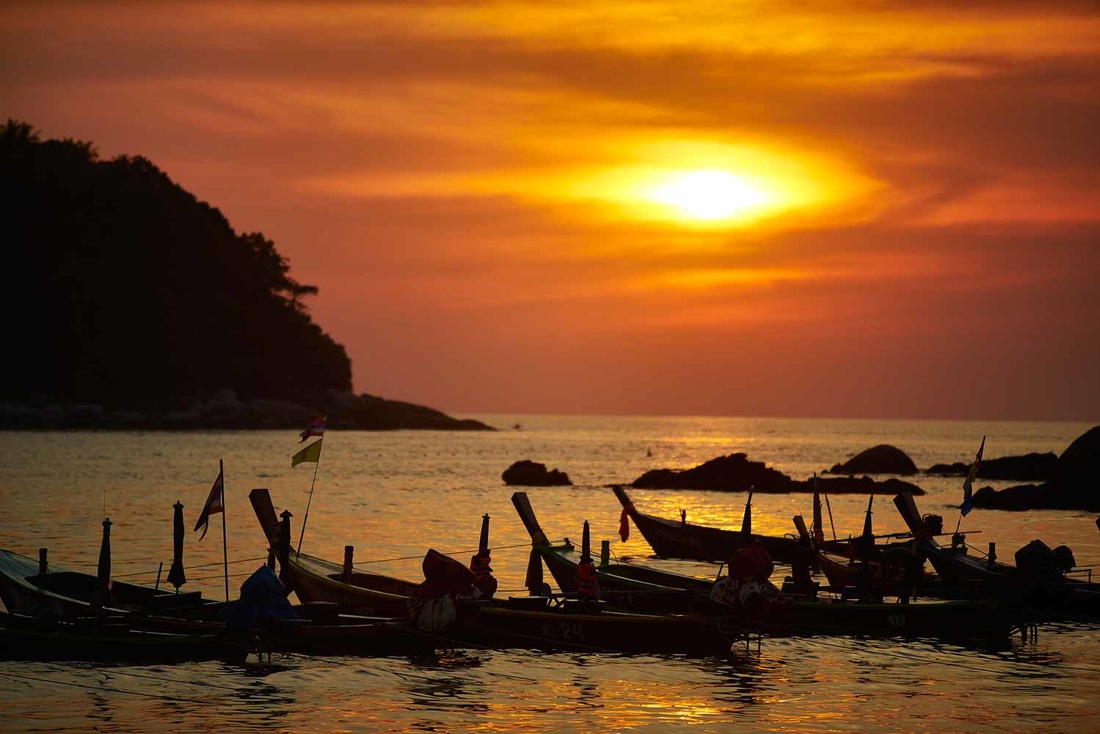|
So far this trip has been about photographing the beautiful places I’ve been and less about venturing out to find the really exciting people. The more I travel the less I care about doing the typical tours that and seeing the same sights as a group of thirty other swimsuit-clad foreigners in a beautiful place that’s not necessarily spoiled, but definitely created by their presence. I’ve seen some sights, drank some beer, and eaten some delicious food. Today was the first time I’ve been really excited on this trip, and it was just going for a hike. There was hiking on the last island to get across to some remote beaches, but it involved a fee to cross the peak and arrived at yet another beach resort. Today's trail, as it was, was as simple as: ‘start from this mosque and go up the hill.’ That was enough to get us out of town and towards a summit we could find little about. We were told by a local there was a route, but the jungle obscured anything we tried to see with technology. Besides directions to a mosque there was little else. But who is Baan Saladan? Baan actually means house, or here a collection of houses, such as a village. Saladan is the name of the northernmost town on Koh Lanta. Koh means island, and this one is called Lanta. Behind the mosque the pavement ended and dirt continued to a small dwelling on the right and a path left into the jungle. After waving to local homeowners and a barking dog we headed towards the mountain. The trail cut aside trees with hanging coconut halves collecting a milky sap. Soon the trail began to follow switchbacks, and earlier a row of trees had been planted along the path, marking it easily. These trees stood 15-20 feet tall now and traced a lightly trodden path, making the way up look quick and easy. Soon these wonderful guided routes ended abruptly in gashes down the side of the steep mountain. Cut, slid, or dug from the hillside, the exposed rock was the color of the dry dirt, dusty and light outside the rainy season exposing shale-like rock that also slid apart. The trees had been pushed or washed away so the rut was free of the dense trees. The lack of jungle seemed a nice direct route, but the loose ground and steep incline made it impossible, albeit dangerous, to ascend. With a little bushwhacking the next switchback could be reached, until it ended at another slide. Further up the trail grew less and less clear, and options became limited. About thirty minutes into the hike the line “this would be a good time to have a machete” came up. Soon tiny red ants came literally from above, and from all sides, and from below. They crossed the leaves on their little ant missions and happily transferred to passing creatures like us. They were nearly impossible to flick off, especially on sweaty skin, and each tiny bite drew a tiny drop of blood. Waiting impatiently, one second… two seconds… no sting or swelling came. Hopefully these tiny bites carried no toxins. Still, I didn’t want my next step to be through their crowded suburbs.  Soon the path disappeared altogether and the ever-present mirage of the “clearing ahead” took us full force through the steep jungle. After a few minutes failure brought us back down in a much tricker descent. Picking though the dense underbrush with careful hands and feet revealed many large insects that had left only their skins when shedding but inevitably carried on just under the next leaf. On one big step down I got the feeling you get when you step too far, your heart jumps a bit and pushes all the breath from you. More jolted internally than light-headed it takes a second to recover. This jolt lasted considerably longer than usual, and while my breath was not gone my lungs still felt like they were jolting upward. Just as I began to think through what jungle malady may be causing this I was back again, still in the jungle but feeling correctly. After a few mis-steps, near misses, and maybe a tumble we made our way back to a previous path and looked for a way to cross the deep gouges that dropped from the jungle floor. We worked our way down slowly we were able to find a tenuous path across one of the ruts. We saw a post. A cement pillar that once help barbed wire. These columns stretched straight up the hillside, still through jungle, but maybe less of it. From a post you could almost see the next, so at least a failed summit left breadcrumbs back. Sweating and stair-stepping from rock to log we pressed upward and the ridge dropped closer. Finally, we were there, in a false clearing. Water first, while we looked around. Man was in the forest. It was cut by a bulldozer, and held the beginning of a small concrete structure. We followed the wide path further as it followed the dense ridge and cut an ugly swath in it. Perhaps it’s for a resort, but this road would be so steep that my best guess is it will become stairs for a Tsunami evacuation route. There is a route now but it doesn’t extend nearly as high as this hilltop which may be the highest on the island. (Chang- sometimes water, sometimes beer) Altogether this simple hike held no view, and besides the discovery of the path not yet photographed by the mapping satellites, it held no discoveries. A machine-made path led to nowhere, bulldozers crept up slopes too steep for cars, and tiny concrete rooms were just taking form. The other days were good, but this was the best day yet. There were monkeys but we barely saw them; tourists didn’t go here so they didn’t know they could steal food from us. This simple, sweaty, uphill hike was a welcome break from the bustle of Shanghai and the bustle on what seemed like islands crowded with as many tourists. Tomorrow is a bike ride. (If you're curious about these possible tsunami stairs in the future, the bulldozer track started immediately before this statue, on the road, which is just after the monastery in Baan Saladan. The mosque is further down the road that runs North/South, about twice the distance to the German bakery from the markets in Baan Saladan)
3 Comments
This is the view to one side of Phuket island from the Big Buddha. Monks teach and chant in a large room underneath the Buddha. It seems the Buddha is perpetually under construction, and has been for years. For an idea of scale, the columns underneath the are too large to wrap your arms around, and you can see the scaffolding from the picture above behind the Buddha in the picture above to the right.
|
Jake BelvinI'm a photographer and film maker traveling in Southeast Asia for the first part of 2016. Archives
March 2016
Categories
All
|




















